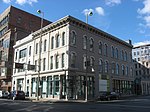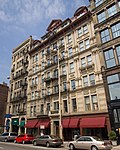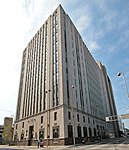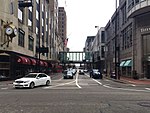Downtown Cincinnati
AC with 0 elementsCentral business districts in the United StatesNeighborhoods in Cincinnati

Downtown Cincinnati is the central business district of Cincinnati, Ohio, as well the economic and symbiotic center of the Cincinnati metropolitan area. It also contains a number of urban neighborhoods in the low land area between the Ohio River and the high land areas of uptown. These neighborhoods include Over-the-Rhine, Pendleton, Queensgate, and West End.
Excerpt from the Wikipedia article Downtown Cincinnati (License: CC BY-SA 3.0, Authors, Images).Downtown Cincinnati
Home Alley, Cincinnati Central Business District
Geographical coordinates (GPS) Address Nearby Places Show on map
Geographical coordinates (GPS)
| Latitude | Longitude |
|---|---|
| N 39.1 ° | E -84.516666666667 ° |
Address
Allright Parking
Home Alley
45203 Cincinnati, Central Business District
Ohio, United States
Open on Google Maps









